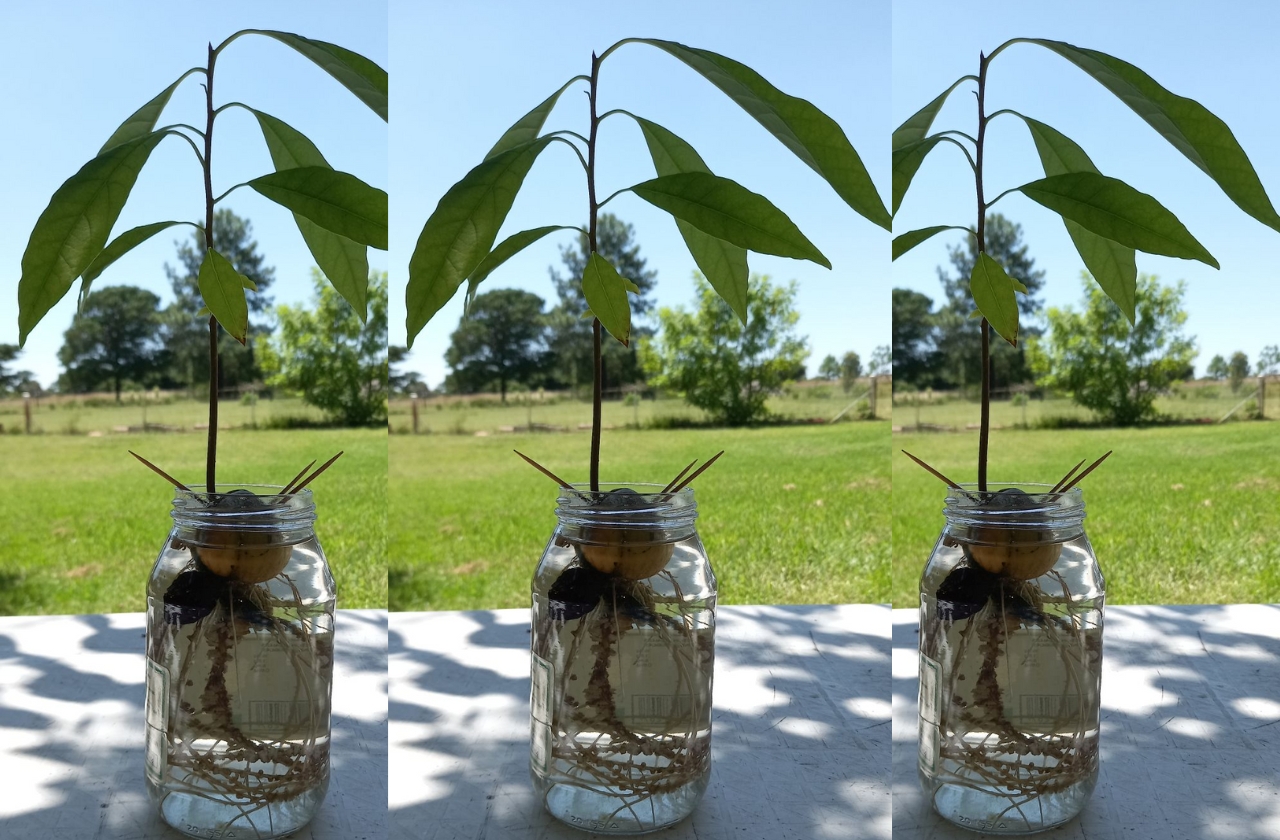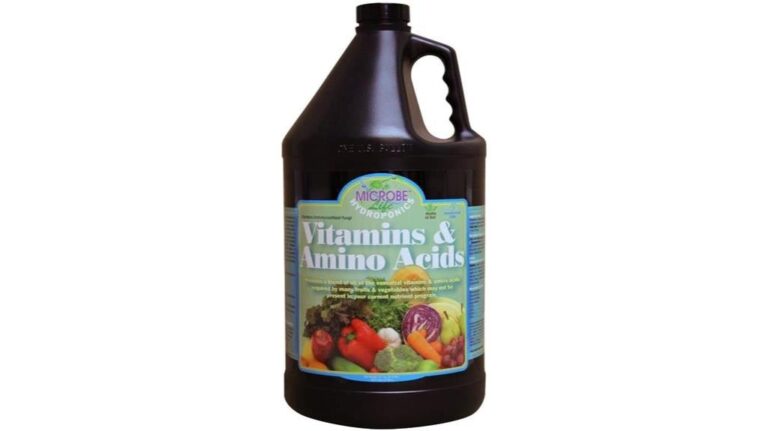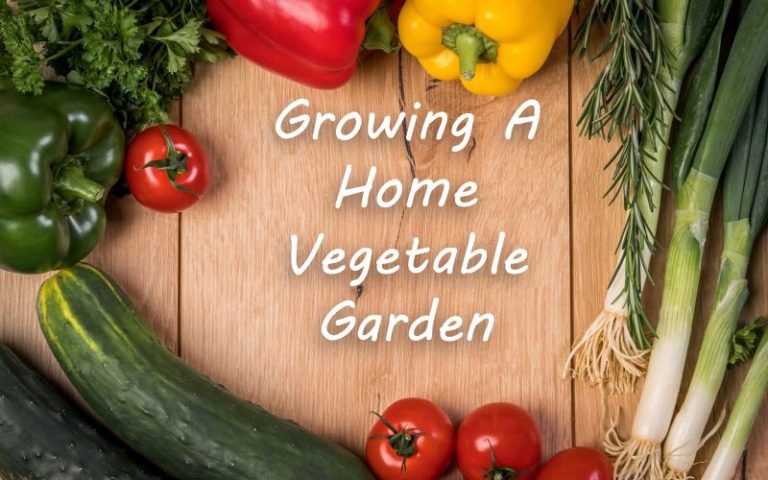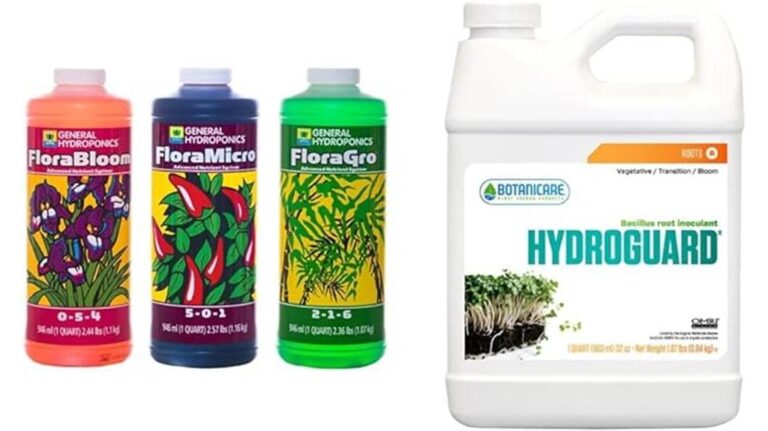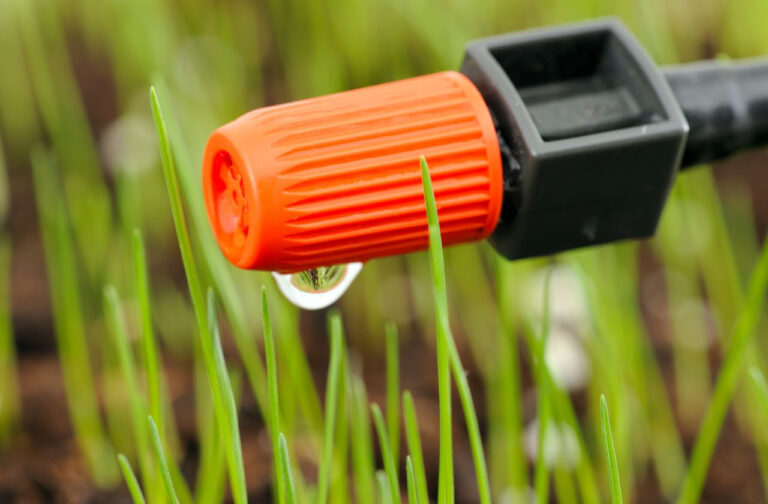What Is Static Solution Hydroponics?
I get commissions for purchases made through links in this post. View our Affiliate Disclaimer.
In static solution hydroponics, you maintain nutrient solutions steady to nourish roots effectively, promote ideal plant growth, and guarantee roots receive enough oxygen. This method provides continuous access to essential nutrients, supports strong root growth, and minimizes evaporation and algae issues. You’ll enjoy precise nutrient control, reduced water usage, and cost savings.
However, managing nutrient levels precisely, combating algae growth, and maintaining proper oxygen levels for roots can be challenging. By understanding these key components, you’ll establish a solid foundation for successful hydroponic gardening endeavors.
Additional Essential Homestead Resources
✅ Medicinal Garden Kit - Grow medicine in your garden! A collection of seeds to get you started.
✅ Homesteaders Handbook - A printed book that covers all the basics for homesteaders.
✅ The Self-Sufficient Backyard - This book is an excellent resource for self-sufficiency on 1/4 acre!
✅ Into The Wild Survival Pack - Learn foundational survival skills every homesteader should know!
Key Takeaways
- Nutrient solutions maintained at a constant level for efficient plant absorption.
- Promotes healthy growth, robust root development, and minimizes evaporation.
- Provides precise nutrient control, oxygen to roots, and cost-effectiveness.
- Requires careful nutrient management, tackles algae growth, and ensures root oxygenation.
- Supports scalability, optimal maintenance, and commercial viability assessments.
How Does Static Solution Hydroponics Work?

In static solution hydroponics, nutrient solutions are maintained at a constant level without the need for continuous pumping or monitoring. This method guarantees efficient nutrient absorption by plant roots, promoting ideal plant growth. Root oxygenation is achieved through the proper management of the nutrient solution level, allowing roots to access the necessary oxygen for respiration. By carefully controlling solution management, static solution hydroponics maximizes plant growth potential while enhancing system efficiency.
Is Static Solution Hydroponics Effective?
The static solution hydroponic system excels in its ability to provide a stable environment for plant roots to thrive. By eliminating the need for constant adjustments and monitoring, this system streamlines the process of nutrient delivery, ultimately benefiting plant health and growth. The efficiency of nutrient absorption in this setup is particularly notable, as roots have consistent access to the required elements for development. Through meticulous solution management, static solution hydroponics offers a reliable method for cultivating plants in a controlled and effective manner.
Static Solution Hydroponics demonstrates its effectiveness through efficient nutrient absorption and streamlined maintenance processes. When considering the effectiveness of this system, several key aspects come into play:
- Nutrient Absorption: The static solution method guarantees that plants have constant access to the necessary nutrients, promoting healthy growth and maximizing yield potential.
- Root Development: The static solution promotes robust root development by providing a consistently nutrient-rich environment, allowing plants to establish strong root systems for peak nutrient uptake.
- Solution Evaporation and Algae Prevention: By minimizing solution evaporation and implementing strategies to prevent algae growth, static solution hydroponics maintains a stable and clean environment for plant growth.
Efficient system maintenance is essential for the continued success of static solution hydroponics. By carefully monitoring nutrient levels, preventing contamination, and ensuring proper aeration, you can optimize plant growth and overall system performance.

Advantages Of Static Solution Hydroponics
Enhance your hydroponic system’s efficiency with the streamlined maintenance and nutrient absorption benefits of Static Solution Hydroponics. This innovative approach offers significant advantages for your hydroponic setup:
| Advantages of Static Solution Hydroponics | Description |
|---|---|
| Nutrient Optimization | Static Solution Hydroponics allows for precise control over nutrient levels, optimizing plant growth and health. |
| Root Oxygenation | The system guarantees adequate oxygen reaches plant roots, promoting robust growth and nutrient uptake. |
| Environmental Sustainability | With reduced water usage and minimal nutrient wastage, Static Solution Hydroponics is environmentally friendly. |
| Cost Efficiency | Lower nutrient costs and simplified maintenance make this system a cost-effective choice for growers. |
Disadvantages Of Static Solution Hydroponics
When considering Static Solution Hydroponics, it’s essential to be aware of the limitations it presents in practical applications.
- Nutrient Management: Static solution systems require precise management of nutrient levels to guarantee plants receive adequate nutrition, which can be challenging and time-consuming.
- Algae Prevention: Algae growth in the nutrient solution is a common issue in static systems, necessitating regular monitoring and maintenance to prevent contamination and blockages.
- Root Oxygenation: Ensuring roots receive sufficient oxygen in a static solution setup can be difficult, especially in un-aerated systems, potentially leading to root rot and reduced plant growth.
These challenges highlight the importance of consistent solution maintenance, including nutrient monitoring and oxygenation, to prevent issues and optimize plant growth. Efficiency concerns also arise due to the extra care and attention needed for successful operation. Therefore, while static solution hydroponics offer certain benefits, careful consideration of these disadvantages is critical for successful implementation.
Examples Of Static Solution Hydroponics
One of the most well-known examples of static solution hydroponics is the Kratky method. Static Solution Hydroponics showcases various setups utilizing different container types and aeration methods to illustrate the practical application of this hydroponic system.
For a DIY setup, consider using common containers like Mason jars or plastic buckets, ensuring clear containers are covered to prevent algae growth. Plastic tubs are practical for larger setups, with black plastic recommended for covering clear containers.
Aeration techniques vary, with gentle aeration common in setups; equipment can be sourced from pet stores. Un-aerated systems require roots above the solution level, necessitating careful maintenance of the solution level.
Nutrient management in static solution hydroponics involves adjusting solutions on a fixed schedule or based on concentration levels, utilizing tools like electrical conductivity meters for monitoring. Employing Mariottes bottles or float valves can prevent solution level drops, ensuring effective nutrient delivery to plant roots. Monitoring tools are essential for maintaining the system’s health and maximizing plant growth potential.
Plants Suitable For Static Hydroponic Systems
In static solution hydroponics, selecting the appropriate plants is crucial to guarantee successful growth within this system. When choosing plants for your static hydroponic setup, consider the following:
- Plant Selection: Opt for plants that thrive in nutrient-rich environments, such as leafy greens like lettuce, herbs like basil, and compact vegetables like cherry tomatoes.
- Growth Rates: Select plants with similar growth rates to ensure uniform development and nutrient uptake within the system.
- Nutrient Absorption: Choose plants with efficient nutrient absorption capabilities to maximize growth potential and minimize nutrient waste.
To promote excellent growth within static hydroponic systems, focus on root development by ensuring adequate space and oxygen levels for healthy root growth. Regularly monitor nutrient levels and pH balance to sustain plant health effectively.
Additionally, maintain a consistent aeration system to facilitate oxygen exchange in the nutrient solution and prevent root rot. By prioritizing plant selection based on growth characteristics and nutrient requirements, you can cultivate a thriving hydroponic garden with ease.
Are Static Hydroponic Systems Scalable?
Scalability in static hydroponic systems refers to their capacity for expansion and increased production efficiency. While these systems offer simplicity and ease of use, they do present scalability challenges. The main hurdle lies in the maintenance requirements as the system grows. As the number of plants increases, so do the nutrient solution management needs. Proper nutrient solution management becomes vital to guarantee all plants receive adequate nutrition. Additionally, root oxygenation methods must be optimized to support a larger plant population effectively. Balancing oxygen levels with increasing plant numbers is essential for sustained growth.
Commercial viability is another aspect to ponder when scaling static hydroponic systems. The initial setup may be economical, but as production scales up, the cost-effectiveness needs to be evaluated continuously. Ensuring that the system remains profitable and efficient as it expands is key to its long-term success. Overall, scaling a static hydroponic system requires meticulous attention to maintenance, nutrient management, root oxygenation, and the overall commercial viability to achieve sustainable growth.

Frequently Asked Questions
What Are the Best Plants for Beginners to Grow in a Static Solution Hydroponic System?
For a beginner in static solution hydroponics, consider starting with an herb garden for simplicity. Opt for easy-to-grow flower varieties like marigolds. Explore beginner-friendly vegetable options such as lettuce or spinach. When ready, experiment with fruit choices like strawberries. Indoor setups offer more control.
Can Static Solution Hydroponics Be Combined With Other Growing Techniques for Better Results?
For better results, you can combine static solution hydroponics with vertical gardening for space efficiency, indoor gardening for controlled environments, container gardening for versatility, urban farming for sustainability, and greenhouse growing with drip irrigation for optimized growth.
How Can Algae Growth Be Prevented in Clear Containers Used for Static Solution Hydroponics?
To prevent algae growth in clear containers for static solution hydroponics, make sure light exposure is minimized, maintain proper nutrient balance, control temperature, promote water circulation, use appropriate aeration methods, and follow maintenance tips such as regular cleaning and monitoring.
Are There Any Specific Considerations for Using Organic Nutrients in Static Solution Hydroponics?
In static solution hydroponics, utilizing organic nutrients can offer benefits like enhanced plant health. However, guarantee proper monitoring to prevent nutrient deficiencies. DIY organic solutions can be effective, but be vigilant about maintaining ideal pH levels.
What Are Some Creative Ways to Repurpose Everyday Items as Containers for Static Solution Hydroponics?
For creative upcycling in static solution hydroponics, repurpose household items like plastic bottles, jars, or buckets as unconventional planters. Consider using recycled materials for DIY solutions. Think innovatively to transform everyday objects into functional hydroponic containers.
Conclusion
To sum up, static solution hydroponics offers a highly efficient and controlled method of growing plants without soil. With faster growth rates and reduced water usage, this innovative technique is ideal for urban farming and limited spaces.
While initial setup costs may be a consideration, the ability to optimize nutrient levels for plant health makes it a worthwhile investment.
Whether for home gardening or commercial applications, static solution hydroponics provides a unique and effective way to cultivate a variety of plants with precision.
Get more posts like this
Subscribe to our mailing list and get interesting homesteading and green living info and updates to your email inbox.
Thank you for subscribing.
Something went wrong.

